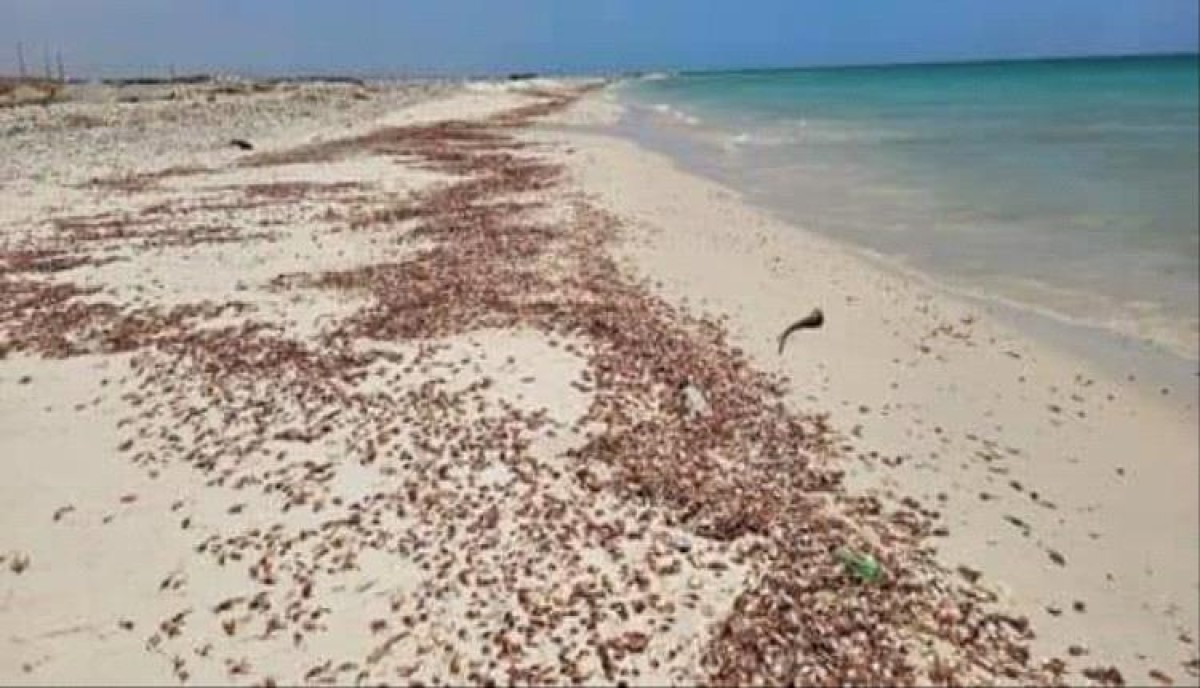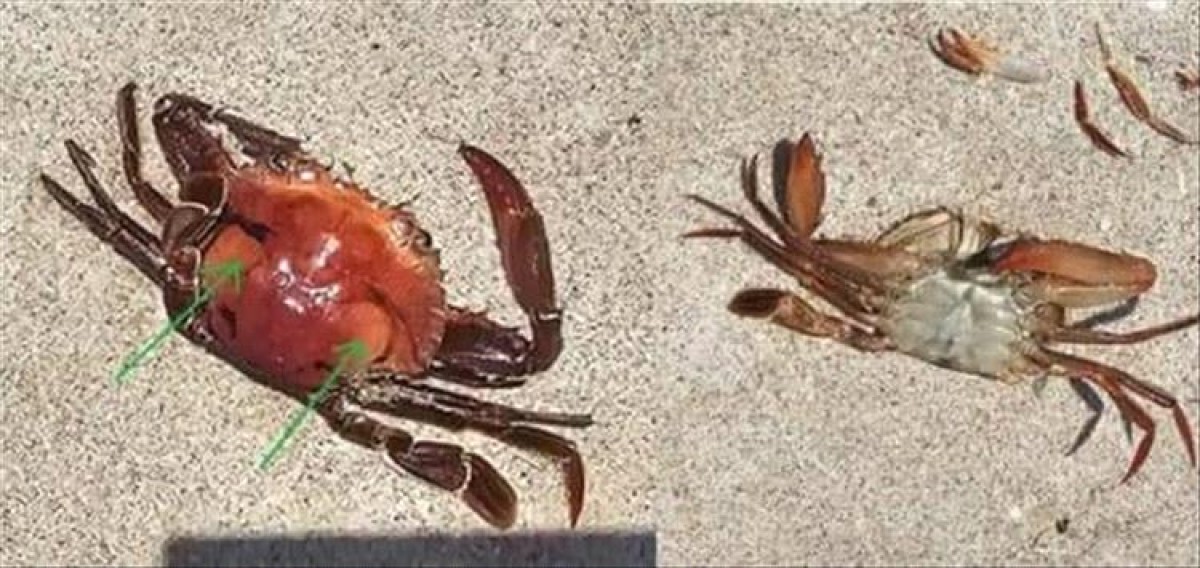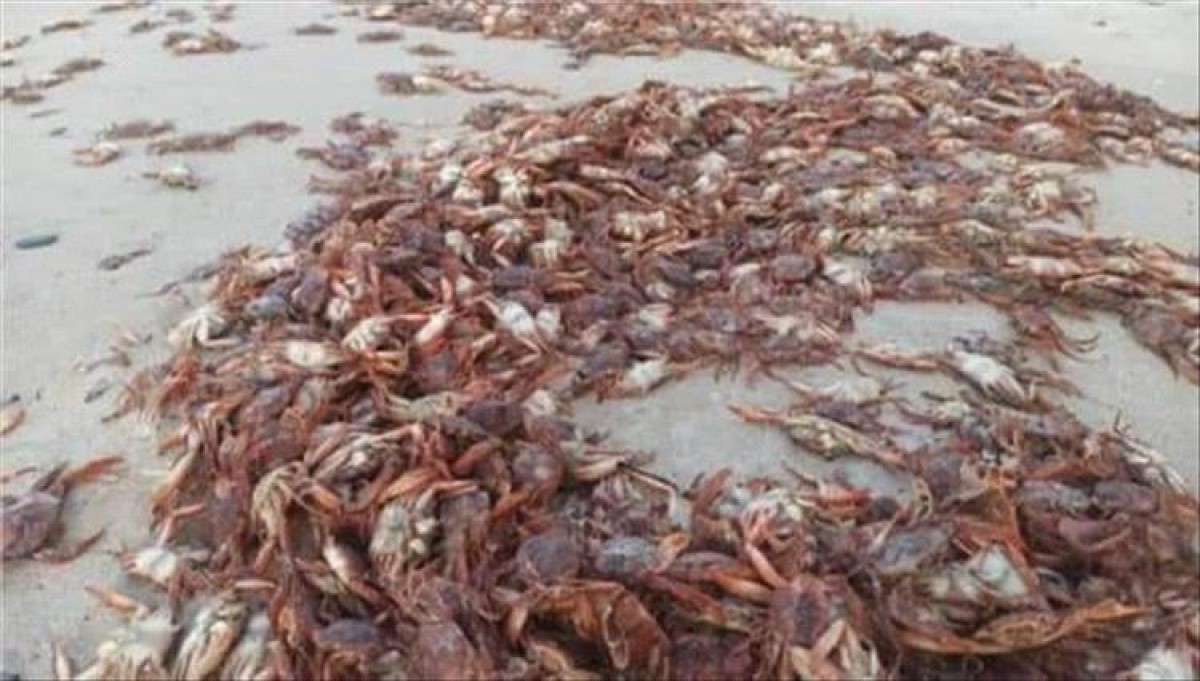Socotra: Large numbers of crabs have died, and an official source explains the reasons


On Saturday, August 24, 2024, social media circulated about the death of crabs in the Socotra Archipelago. The Acting Chairman of the Public Authority for Environmental Protection, Eng. Faisal Obaid Al-Thalabi, communicated with specialists from the branch of the Public Authority for Environmental Protection in the Socotra Archipelago and directed the need and speed of disembarkation. To the site and submit a report about the situation.
A group of specialists from the authority’s branch in Socotra initiated a field trip to the site from which the photos were taken. It turned out that the photos circulating were taken from the beach of Khaisa, Ghadib area, west of the city of Hadibu, about 5 kilometers away from it. The results of the trip were as follows: -
* Field inspection:
1- Cancer is a type of mangrove cancer that is widespread, but it cannot be identified accurately/needs a specialist in the type.
2- There was no odor or rot emanating from these large numbers.
3- There were no flies or insects on this species
4- There were no birds eating from these dead crabs, nor any cats.
5- Some of them were floating on the surface of the water near the shore (dead).
6- All the samples that were examined were empty inside, which was a shell.
7- No dead fish or other species were observed.
8- The remains of cancer crusts spread over a distance of approximately 200 metres.
* Analysis:
After the office review, it became clear that there are several reasons that lead to the death of water crabs, and similar phenomena have occurred in many parts of the world, the most important of which was a lack of oxygen in the water, poisoning, pollution, disease, or algal blooms that affect the chemical properties of the water. And physics, but what negates these possibilities is that no dead specimens other than this type were observed, and no change was observed in the sea water. It is clear that what happened is a natural accident, as the crabs go through the stage of shedding from the external skeleton (the outer shell) during a period of growth. After developing a new, strong internal structure (see the video in the link), (https://www.youtube.com/watch?v=pYdC5vJ0jxA), sometimes the timing of molting for a large group of crabs of the same type that live in the same location coincides with each other. leaving countless numbers of outer shells (Poirier et al., 2016).
* Result:
The team believes that what is found on the beach is the peeled outer shell of crabs and not dead individuals because:
1- There is no noticeable change in the water.
2- There are no dead species other than the observed cancer.
3- The examined samples are an outer shell devoid of any internal tissue.
4- There is no rot, insects, or predation by birds.
5- Some fishermen from the area were asked and they answered that this is a natural phenomenon that they already know, and that it heralds a good fish season after the wind ends.
* Recommendations:
There is no cause for concern. Rather, it is a natural phenomenon known to fishermen and in several regions. Therefore, what can be recommended is to document this phenomenon in a scientific publication so that it does not cause any future concern, and also to try to define the species accurately with specialists about it. By taking non-fading samples of the outer crust, preserving them, and photographing them accurately for classification purposes.

